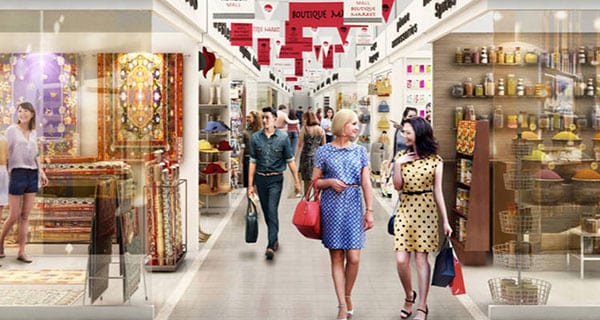 Pick a mall in Anywhere, Canada, and visit on a Sunday afternoon.
Pick a mall in Anywhere, Canada, and visit on a Sunday afternoon.
It’s as close to a first-hand view of Canadian life as you’re likely to find, save a Tim Hortons drive-through or the local arena.
On weekends, thousands of Canadians of all ages and walks of life converge on malls, to meet, eat, exercise and, of course, shop. They come as families and as couples; they travel in teenage packs and on seniors bus tours. It’s a snapshot of everyday life.
And, despite disparate lifestyles and backgrounds, mall visitors share one thing: they use energy to get to, into and away from the mall. From the moment cars roll out of the driveways until they roll back a few hours later, Canadians have been on an energy consumption field trip, connecting to and interacting with an array of energy systems.
Do they give much thought to that? Not to the degree they should.
Malls, then, are a perfect place for Energy 101.
Mall life is the ideal microcosm of the energy paradox in Canada. Perhaps through them, people can understand how energy intersects their lives in ways that are so ubiquitous and commonplace as to be virtually invisible.
But a Sunday afternoon poll of mall visitors might reveal disturbing results about how far energy, and its production and consumption dynamics, are from the general consciousness. The latest sale is almost certainly a greater concern than the mall’s utility bill – or the cost to themselves, the environment and so on.
Most Canadians are generally energy apathetic. They know a little bit (often believing they know more). And while they might profess to care (say, for the environment), the widening knowledge gaps between how they consume and the costs of that consumption are a real threat to Canada’s energy foundation.
We’re firmly entrenched in an era of dangerously unbalanced energy discourses. And that threaten to cleave the country.
Energy policy is largely being driven by idealogical engines that often have laudable objectives but can, uncontrolled, threaten the equilibrium required to transition between energy systems. Both the economy and the environment will suffer unless we develop a better way of shaping our energy future.
Meanwhile, energy dialogue has in part been hijacked by special interest groups that often paralyze politicians. As a result, at a time when Canada should be coming together to talk energy, the country is mostly polarized.
Can malls save the day?
The typical mall is a terrific example of the interplay of energy systems, carrying the weight of a functioning society with them.
From the asphalt surfaces of the roads to the mall to the massive acres of asphalt parking lot, shoppers are connected to energy.
There are aspects of power generation and transmission to be considered, as well as emissions.
Every item purchased at the mall has an energy footprint as the result of its manufacture and packaging.
Shoppers should also consider the ships, trucks and trains it takes to stock the mall’s shelves.
Mall visitors want them warm in the winter and cool in the summer.
They expect the parking lots to be cleared of snow in a timely fashion and the landscaping to be cared for.
They enjoy good lighting, particularly at Christmas when the twinkle of decorative lighting sets the tone.
Then there’s the food court, an energy system unto itself when the price of getting food from field to fork to belly is tallied.
Those rooted in the natural sciences are predisposed to argue the facts. Those with orientation to the social sciences lean toward the way people emotively think about risks and costs. The mall is the ideal place for the two perspectives to align on raising energy consciousness.
It’s also a safe place for opponents to join and define a framework for Canadians to learn about energy – placing them into the systems they use to live and helping them constructively consider their energy choices.
We can use malls to teach some tough lessons. Let’s get started on the curriculum.
Bill Whitelaw is president and CEO at JuneWarren-Nickle’s Energy Group.
Bill is a Troy Media Thought Leader. Why aren’t you?
The views, opinions and positions expressed by columnists and contributors are the author’s alone. They do not inherently or expressly reflect the views, opinions and/or positions of our publication.


